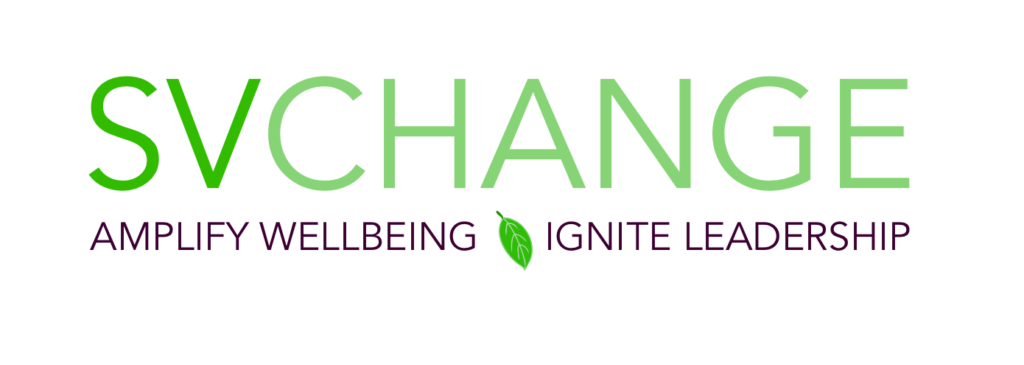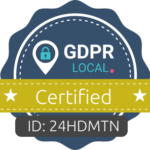How are you? No, really, how are you? Our automatic response to this question is usually a quick “fine.” But are you really fine? A study in April of 2021 by McKinsey on the future of post-pandemic work found that 49% of employees reported being at least somewhat burned out. I wouldn’t be surprised if this number has climbed over the last year.
Work-life boundaries continue to blur with remote work, the impact of work-force reductions (or resignations) take a toll on those who remain, and lingering effects of Covid and its aftermath are depleting us. These are just a few possible contributors to a workforce that feels less than flourishing. Of course we are drained and tapped out!
In positive psychology, we look for strengths and study what’s working.
This knowledge can help us determine what to do more of, as opposed to a pathology model for what we don’t want. We are curious about what allows people to thrive and how to make deposits into our wellbeing bank. If I had access to those surveyed by McKinsey, I would love to interview the 51% to see what was contributing to their non-burnout state. Since I don’t have access to them, I do have a direct line to the wellbeing experts on our team.
Recently I asked them to weigh in on unique ways to manage stress, a question posed by one of our HR partners. As a company built on the science of wellbeing, I was thrilled to throw this inquiry to our coaches and see what answers they came up with.
Below you will find the SVC top 25 list of stress reducers and positive energy boosters. Some may surprise you, and others may seem obvious yet easily forgotten. This list integrates tips that you can test out, as well as things you may want to implement on your team to impact culture in an organization.
The good news is, you don’t need to redesign your life or company to get a much needed boost.
These suggestions are relatively small, and easily consumable, actions that can make a big difference in your day-to-day life. They are arranged in 5 main categories – Physical, Mindfulness, Self-awareness, Connection, and Organizational Wellbeing.
Physical
- Get enough sleep – current guidelines by the National Sleep Foundation are 7-9 hours
- Move your body throughout the day – consider walking meetings to move and get fresh air
- Have a dance party
- Sign up for a workout challenge to add structure and goals to your workout plan
- Identify a workout buddy for movement accountability
Mindfulness
- Listen to your favorite music
- Incorporate a meditation practice into your daily routine
- Savor events in the present (experience savoring), Past (reminiscent savoring), Future (anticipatory savoring)
- Get out in nature to experience a sense of awe
- Keep a journal of things that are going well and/or things you feel grateful for
Self-awareness
- Know and use your strengths daily – take the VIA character strengths assessment
- Make sure your work aligns with your values – check out this list of values from James Clear
- Do tough projects when your energy level is high and less taxing projects during your lower energy times
- If you are introverted, and require quiet time to recharge, make sure to block time for yourself
- For days when you anticipate high stress, make sure to have time blocks designated throughout the day to replenish and refuel yourself
Connection
- Call a friend who makes you laugh
- Hug your person or pet for a release of oxytocin
- Play/be goofy/have fun
- Serve others by volunteering as a team or individually
- If you are more extroverted, make sure to have regular social interactions that fill your bucket
Organizational Wellbeing
- Create a work environment that supports wellbeing by having guidelines around healthy work hours (no emails/meetings outside of these hours)
- Consider a flexible work week
- Give positive feedback and show genuine appreciation – catch people doing something well and be specific about what they did right
- Communicate plans regularly and transparently with employees
- Reward and/or acknowledge employees who practice self-care and proactively manage their wellbeing
Our health, and our performance, depends on living with intention and prioritizing self care.
There are no shortcuts when it comes to wellbeing and stress management. Deliberately practicing these, or other stress busters, will allow you to operate at your peak. Think of it as regular deposits into your wellbeing bank to keep your account at a healthy level.
Remember, it’s always better to withdraw when you have a balance, than to tap an account that’s been depleted!
Which tips would be the easiest for you to contribute to your wellbeing bank? What one tip could you try out today? What tip might take a little more effort, but you are up for the challenge given the anticipated reward?
I’m curious, what are you currently doing to manage your stress and contribute to your wellbeing?
Thank you to Sharon, Kelly, Brian and Jan for contributing your wellbeing tips!










